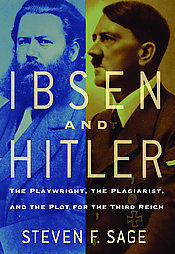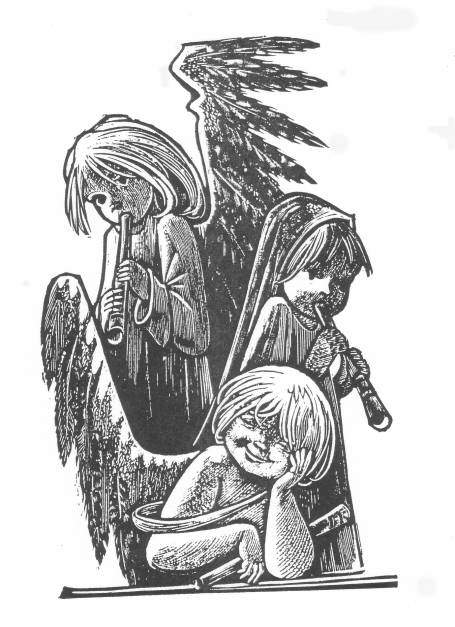Things keep getting more and more interesting in Arizona. Now they have penalized school districts that have ethnic studies courses: As reported by the NYTimes, “any school district that offers classes designed primarily for students of particular ethnic groups, advocate ethnic solidarity or promote resentment of a race or a class of people would risk losing 10 percent of its state financing.”
The people involved in teaching these courses deny that there is any advocacy of ethnic solidarity or racial resentment against Whites. And if you believe that, I’ve got some land I’d like to sell you.
Tom Horne, the state superintendent of public instruction, is the main man behind the law. He points to an incident in which all the Mexican students walked outon a speech by his deputy, a Republican Latina who was trying to counter another speaker who said that Republicans hate Latinos: “In the middle of her speech, a group of students that are in the Raza [!] studies program got up, put their fists in the air, turned their back to her. The principal asked them to sit down and listen, and they walked out on their own principal.” Sounds like a hostile act of ethnic solidarity.
The NYTimes article mentions that Horne objects to Pedagogy of the Oppressedby Paulo Freire, and the LATimes mentions Horne’s objection to Occupied America: A History of Chicanos, by Rodolfo Acuña, a professor and founder of the Chicano studies program at Cal State Northridge. Who would ever think that titles like that could lead to resentment against a certain (very evil) race?
Actually reading these books is well beyond my tolerance level. Friere’s book sounds like straight cultural Marxism right out of the Bill Ayers playbook. A reviewerquotes Friere: “Education as the exercise of domination stimulates the credulity of students, with the ideological intent (often not perceived by educators) of indocrinating them to adapt to the world of oppression.”
Occupied America emphasizes the evil that Whites have inflicted on Mexicans and Native Americans in the past. An Amazon review titled “Abajo con los Gringos!” (“Down with the Gringos”) states that Acuña’s book “contributes additional heft to the indictment of White settlement and expansion in this hemisphere as the cause of immense suffering by an essentially stone-age culture at the hands of a militarily superior civilization.” Another states that Acuña
pulls up countless accounts of slaughter, rape, torture, mutilation, and abuse of Mexican men, women, children, mostly incited as a sort of blood sport by American cavalry, enlisted men, volunteers, and associates, as well as the leveling of Mexican cities and towns just for target practice. To add to the war crimes, most of the Americans involved, even the command of Zachary Taylor, were never brought up on any charges, nor even in the most slightest way, reprimanded for their actions.
One has to agree with Horne and Arizona Governor Jan Brewer that this sort of thing is likely to produce hatred toward Whites. A spokesman for Brewer stated, “Governor Brewer signed the bill because she believes, and the legislation states, that public school students should be taught to treat and value each other as individuals and not be taught to resent or hate other races or classes of people.” Horne says much the same.
So the ideology underlying the bill is to let bygones be bygones and get on with the project of getting along with each other. The intellectual basis is classic libertarian individualism. Horne puts it this way:
I believe that what’s important about us is what we know, what we can do, what’s our character as individuals, not what race we happen to have been born into. And the function of the public schools is to bring in kids from different backgrounds and teach them to treat each other as individuals. And the Tucson district is doing the opposite. They’re teaching them to emphasize ethnic solidarity, what I call ethnic chauvinism. And I think that’s exactly is the wrong thing to do in the public schools, and that’s why I introduced this legislation to give myself the authority to put a stop to it.
This libertarian ideology is indeed the last hope of those intent on avoiding a race war as the inevitable consequence of present trends. The idea is that the faces will look different as the US absorbs all these immigrants, but we’ll still have a consensus commitment to individualism — nothing but vestigial group loyalties. No group conflict. No retribution for what happened in the past.
But now that America has gone so far down the road of minority ethnic consciousness and has signed on to massive non-White immigration motivated by fear and loathing of the traditional White population, is it really possible to turn back and pretend we are all nothing more than individuals? One reason to think that this is very unlikely to happen is that individualism is a unique creation of Western culture. No other culture has developed individualist institutions, and there is no reason to suppose that the millions of non-Whites who are crowding our shores will do so. Certainly these programs of ethnic consciousness raising will do nothing but strengthen group loyalties and hatred and resentment and hatred of the White majority.
At TOO we have repeatedly emphasized that White Americans are crazy to voluntarily become a minority in a society where the non-White majority has historical grudges against them and continues to have a strong group consciousness. Hostility to the traditional people and culture of America is a powerful current among Jews, spanning the entire Jewish political spectrum, from leftist intellectuals like Susan Sontag (“The white race is the cancer of human history”) and Howard Zinn (whose A People’s History of the United States has been a staple of college history courses for three decades) to neoconservatives like Norman Podhoretz (see also here). It goes without saying that these attitudes are common among Blacks, and the fact that Acuña’s work is mainstream among Latino intellectuals is yet another indication, if any were needed, that it is common among Latinos too.
All the indications are that non-Whites are coalescing into a powerful political coalition centered in the Democratic Party. This coalition is formidable in large part because of the prominenc of Jews who are such an important component of American elites in the areas of personal wealth, media and political influence, and in the legal and academic worlds.
This plea for individualism is really the last gasp of hope for avoiding a racial bloodbath in the future. It is simply inconceivable that a non-White majority led by racial and ethnic activists filled with anti-White hatred of the sort that we see every day now will somehow be magically transformed into an idyllic Neverland of individualists of all races, ethnicities and religions. Unless Whites manage to develop a separatist state or manage to massively reverse the changes of the last 45 years, they will be in a physical fight for survival.
This is not to deny that Whites have been brutal towards other peoples in the past. But it is naïve to suppose that non-Whites would behave any differently if they could have. Speaking as an evolutionist, the idea that Western culture is uniquely evil is ridiculous.
But the idea that Western culture and White people are uniquely evil have been common among the intellectual activists of the left that now dominate in the academic world, beginning with the Boasian anthropologists who dominated anthropology for most of the 20th century. The Boasians created an imaginary past expunged of ethnic violence and warfare (see here, p. 29 ff.) Non-Whites were portrayed as gift-givers and myth-makers, not at all prone to ethnic warfare.
Non-White intellectual activists are now celebrating their ethnocentrism and hostility toward Whites. Legions of them are tenured professors in departments of ethnic studies. Acuña’s department of Chicano studies at CSU-Northridge has 28 professors, and it’s the same pretty much everywhere. The Arizona legislation shows that this sort of intellectual ethnic activism also pervades the K-12 curriculum.
So Whites really have three choices:
- Reverse the trends of minority empowerment by getting rid of ethnic studies programs and deporting illegal immigrants, as Arizona is doing. However, that won’t be enough, unless they succeed in getting the very large numbers of legal non-White immigrants to leave.
- Stake out a White separatist area in North America.
- Get ready for the coming race war.









